As the world continues to look for alternatives of sources to feed its insatiable appetite for energy while reducing reliance on fossil fuels, a new source may lie in an unexpected place: the Sounds around us. Investigations into Sound Energy have been ongoing for many years, but the use of sound as a Source of Energy is still in its nascent stages.

DEFINITION
In physics, Sound is a vibration that propagates as an acoustic wave, through a transmission medium such as a gas, liquid or solid. In human physiology and psychology, sound is the reception of such waves and their perception by the brain. Only acoustic waves that have frequencies lying between about 20 Hz and 20 kHz, the audio frequency range, elicit an auditory percept in humans. In air at atmospheric pressure, these represent sound waves with wavelengths of 17 meters (56 ft) to 1.7 centimeters (0.67 in). Sound waves above 20 kHz are known as ultrasound and are not audible to humans. Sound waves below 20 Hz are known as infrasound. Different animal species have varying hearing ranges.

HOW WE HEAR
The Hearing Process
In essence, our ears work to alter the acoustic stimulus that enters and move through our ear canals, into a form of neural code that our brains can decipher, process and comprehend.
Here are 6 basic steps to how we hear:
- Sound transfers into the ear canal and causes the eardrum to move
- The eardrum will vibrate with vibrates with the different sounds
- These sound vibrations make their way through the ossicles to the cochlea
- Sound vibrations make the fluid in the cochlea travel like ocean waves
- Movement of fluid in turn makes the hair cells The auditory nerve picks up any neural signals created by the hair cells. Hair cells at one end of the cochlea transfer low pitch sound information and hair cells at the opposite end transfer high pitch sound information.
- The auditory nerve moves signals to the brain where they are then translated into recognizable and meaningful sounds. It is the brain that “hears”.
Our hearing process truly connects us to the soundscape of our surrounding environment. Our hearing system provide us with an amazing ability to identify and comprehend the most minuscule acoustic cues. In fact, our brains are capable of storing the neural equivalents of acoustic patterns like music, voices, danger sounds, and environmental sounds. This similarity makes it much easier for us to recognize and process both familiar and unfamiliar sounds.
Hearing loss occurs when sounds that are typically loud become softer and less intelligible; this is a result of our brain being misled through a loss of audibility. Information also becomes distorted as it reaches the brain, disrupting the quality of our hearing.

The basic components of a sound wave are frequency, wavelength and amplitude.
Frequency is the number of pressure waves that pass by a reference point per unit time and is measured in Hertz (Hz) or cycles per second. To the human ear, an increase in frequency is perceived as a higher pitched sound, while a decrease in frequency is perceived as a lower pitched sound. Humans generally hear sound waves whose frequencies are between 20 and 20,000 Hz. Below 20 Hz, sounds are referred to as infrasonic, and above 20,000 Hz as ultrasonic. The frequency of middle “C” on a piano is 246 Hz.
Wavelength is the distance between two peaks of a sound wave. It is related to frequency because the lower the frequency of the wave, the longer the wavelength.
Amplitude describes the height of the sound pressure wave or the “loudness” of a sound and is often measured using the decibel (dB) scale. Small variations in amplitude (“short” pressure waves) produce weak or quiet sounds, while large variations (“tall” pressure waves) produce strong or loud sounds.
The two examples below show sound waves that vary in frequency and amplitude.
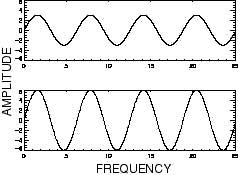
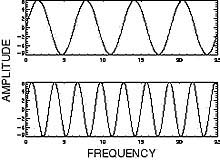
SOUND ENERGY
As the world continues to look for alternative sources of fuel to feed its insatiable appetite for energy while reducing reliance on fossil fuels, a new source may lie in an unexpected place: the sounds around us. Investigations into sound energy have been ongoing for many years, but the use of sound as a source of energy is still in its nascent stages.
What is Sound Energy?
There are many different types of energy and sound energy results from the vibrations of sound waves.
But how does this actually happen? When a disturbance causes an object or substance to vibrate, the energy produced by the vibration travels through the object as sound waves. The vibrating object or substance must be either solid, liquid, or gas.
Something as basic waving our hands in a substance like air would cause enough vibrations leading to sound waves. The sound waves produced by these means are not loud enough to be heard by humans, but the principle is the same for sound waves that are audible to our eardrums. The vibrations cause molecules in the substance to bump into each other and create a knock-on effect that leads to the production of sound waves.
There are two main types of waves: longitudinal (or compression) waves and transverse waves. Longitudinal waves are formed when the waves move in the same direction as the force acting on the substance. Areas where the waves are most compact are called compressions; those areas where the waves are most extended are referred to as rarefactions.

Transverse waves, on the other hand, move in a direction that is perpendicular to the applied force. Whereas longitudinal waves can occur in any of three substances—solids, liquid, or gases—transverse waves can only move through solids.
The vibrations that produce these sound waves are felt by our ears, which then makes sense of them. For human ears to detect a sound vibration, it has to be moving at anywhere between 20 vibrations a second and 20,000 vibrations a second. More sound vibrations per second indicates a higher pitched sound. These sound vibrations are measured in Hertz, denoting the frequency of a sound. However, the loudness of a sound is measured in decibels a (dB), with normal conversation being at around 60 dB.

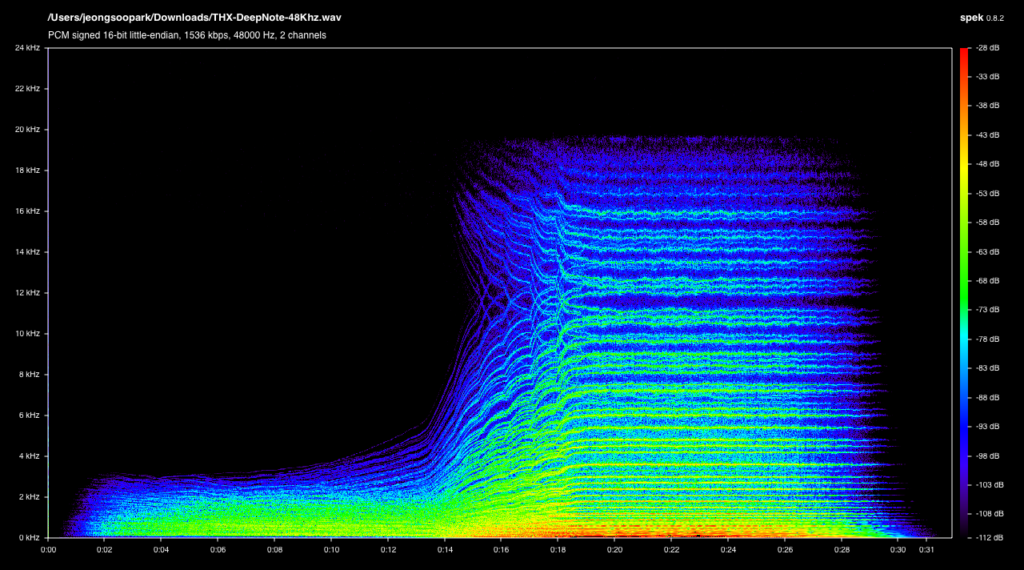
HOW IS SOUND ENERGY USED?
Though attention to sound energy as a possible replacement for other power sources is a relatively new phenomenon, there are examples of sound energy that we humans have long used for vital activities.
One example of sound energy has contributed to saving lives. When pilots bail out of an airplane that is experiencing engine troubles and they go down at sea, they can release a small explosive charge that emits sound energy.
The sound of a small explosive travels thousands of meters in the deep ocean because it is trapped in the deep sound channel, known as the SOFAR or Sound Fixing and Ranging Channel. The sound can then be picked up by special devices in the ocean and the location of the downed pilot ascertained, enabling their rescue.
Another example of sound energy is one that is familiar to many of us—the use of ultrasound. Ultrasound is made up of very high-frequency longitudinal waves that can be used to break up gall and kidney stones. It’s also commonly used for medical imaging purposes during a woman’s pregnancy.
A third example of sound energy is one not normally associated with humans – echolocations. It is common knowledge that animals such as dolphins, whales, and bats use echolocation to help them navigate and hunt. These creatures send out sound waves that bounce off of objects and return to them as echoes, which indicate to them the location of prey or obstacles in their path.
But did you know that some humans also use echolocation? Some blind and visually impaired people do so by making clicking sounds with their tongues or tapping with their canes. The sound waves they create bounce off of objects and serve to inform them about their location, size, and texture.


CAN SOUND ENERGY REPLACE FOSSIL FUELS?
Researchers have been investigating sound energy as one of the renewable forms of energy over the past few decades. Researchers are interested in it because sound energy contains two types of mechanical energy potential and kinetic—which means it has the capacity to do work. Learn more in our guide that explains the difference between potential and kinetic energy.
However, technology for harnessing sound energy as a source of power has not yet reached the stage where it can be used at scale. For example, the sound of a pneumatic drill, something most of us find too intense, generates only as much of a hundredth of a watt of energy per square meter, whereas solar energy over the same area would produce as much as 680 watts.
Nevertheless, the pervasiveness of sounds in our environment makes harnessing sound energy for power a tantalizing prospect. Scientists refer to this as acoustic energy harvesting, and research into its potential as a power source has mainly focused on three technologies: Helmholtz resonators, acoustic metamaterials, and thermoacoustic engines.
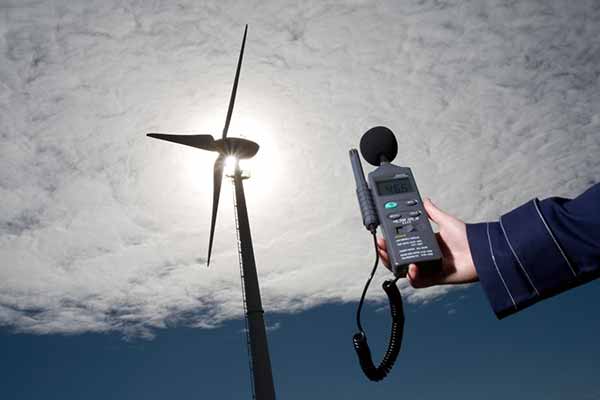
Helmholtz Resonators
Helmholtz resonators are used to amplify or absorb sound. In one experiment, researchers drew on this property to capture and amplify sounds at a railway station. They then converted the sound energy into electric energy with the aid of an electricity generator module. The resulting power output was enough to operate small electronic devices.
Acoustic Metamaterials
These types of materials are deigned to manipulates sound waves to achieve a particular objective. Those being developed to harness sound energy both amplify incoming sound waves and concentrate the energy from the sound waves to enable their conversion into electrical energy. Piezoelectric structures are commonly used for designing acoustic metamaterials.
Thermoacoustic Engines
These types of engines convert heat into sound energy from which electric energy is then harvested. Thermoacoustic engines are considered an easy and reliable technology to use. However, it does rely on an external power supply to drive its energy harvesting process, unlike the other two. Among its applications is the recovery of automobile exhaust waste heat to reduce emissions, which is then converted to sound energy from which electric energy is harvested.
However, these methods of acoustic energy harvesting are limited in their real-world application. One reason is that some methods work with only a narrow band of frequencies, whereas many of the sounds available for sound harvesting in modern life are in the broadband frequency range. An allied limitation is that the areas used for collecting sounds, as in the case of acoustic metamaterials, are typically very small, so not much energy can be collected.
IS SOUND ENRGY A RENEWABLE ENERGY SOURCE?
The use of energy from acoustics as a renewable energy source is still more in its experimental stages. One such experiment captured the noise generated in three bus stations. With the aid of acoustic metamaterials, namely piezoelectric, it converted this noise to electric energy.
The researchers said their aim was to reduce the use of non-renewable energy sources while creating “green sustainable electric energy” that could be used to power streetlights. The locations where they captured sound routinely had noise levels of around 80 decibels and the energy caught yielded about 0.024 watt hours from an area around 1.5 meters squared.
However, a few companies seem to have made headway with the use of this form of energy on a commercial scale. A Department of Energy-funded technology, known as Resonant Acoustic Mixing (RAM), developed by Resodyn Corp. is marketed for use in industries that do mixing as a major part of their production process.
Sound vibrations are used to mix liquids and slurries, such as in the manufacture of ceramics, food, and pharmaceuticals, and for water treatment.
Another commercial application of sound energy as renewable energy is being made by the aircraft manufacturer Boeing. The company filed a patent in 2015 for a technology that would harvest the sounds from jets taking off at airports and would convert that sound into electricity for use as power.
Yet another patented sound energy application was developed by researchers at RMIT University in Australia. The scientists there have patented a technology that uses high-frequency sound waves to deliver vaccinations by inhalation rather than using needles.

TRANSPORTATION AND INDUSTRIAL SOUND ENERGY
Sound energy occurs when an object vibrates. Noise, whether within the human range of hearing or not, is sound energy. Sonar, ultrasonic (greater than 20 kilohertz) music, speech, and environmental noise are all forms of sound energy.
Whether from an inanimate object or a sentient being, sounds come from everywhere. Some are pleasant to our hearing, some are not. Consider these sound energy examples and how they make you feel:
- The high, delicate tingle or the deep, vibrant tones of a wind chime
- The engine rumble, screeching tires, blaring radios, and squeaking brakes of traffic
- Babies crying, babbling, screaming, and giggling
- Dogs barking, growling, or howling
- Telephones ringing, buzzing, or jingling
- Rain patter, howling winds, and thunder
- Cats purring, meowing, and scratching
- Humans and animals breathing, snoring, sneezing, or wheezing
- The frying, crackling, boiling, chopping, and banging of a busy kitchen
- Waves crashing and withdrawing
- Motors running, revving, thumping, and roaring
- The soft, loud, brassy, smooth, deep, reedy, raucous, and distinct sounds of music
- The low, steady white noise of air conditioning
HOW DOES SOUND ENERGY PRODUCE ELECTRICITY?
Sound vibrations can become electrical energy through the principle of Electromagnetic Induction. Electromagnetic induction generates electrical current using a magnetic field. When a magnetic field and a conductor, such as a wire coil, move in relationship to one another, electromagnetic induction occurs. As long as the conductor is in a closed circuit, current flows wherever the conductor crosses the lines of the magnetic force.
What is Electromagnetic Induction?
Electromagnetic Induction was discovered by Michael Faraday in 1831, and James Clerk Maxwell mathematically described it as Faraday’s law of induction.
Electromagnetic Induction is a current produced because of voltage production (electromotive force) due to a changing magnetic field.
This either happens when a conductor is placed in a moving magnetic field (when using an AC power source) or when a conductor is constantly moving in a stationary magnetic field.
As per the setup given below, Michael Faraday arranged a conducting wire attached to a device to measure the voltage across the circuit. When a bar magnet is moved through the coiling, the voltage detector measures the voltage in the circuit.
Through his experiment, he discovered that there are certain factors that influence this voltage production. They are:
- Number of Coils: The induced voltage is directly proportional to the number of turns/coils of the wire. Greater the number of turns, greater is voltage produced
- Changing Magnetic Field: Changing magnetic field affects the induced voltage. This can be done by either moving the magnetic field around the conductor or moving the conductor in the magnetic field.
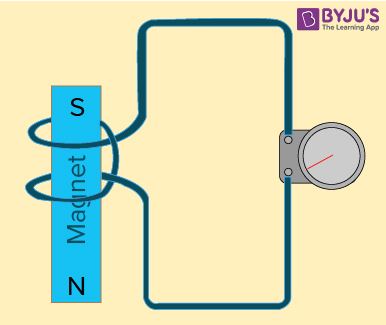
CAN SOUND ENERGY BE STORED?
The same issue that hindered the uptake of most forms of renewable energy for several years arises with sound energy: How do you store the energy after you have captured it? Typically, any sort of mechanical wave, including sound waves, will change its form upon coming into contact, with an object. Some of it will be absorbed by the material it comes into contact with or it will be scattered. When the sound waves are absorbed they become another form of energy.
Researchers have developed a way to store sound energy until it is needed so that it will be converted to electrical energy only on demand. Known as coherent virtual absorption, the technique basically disrupts the way sound waves typically interact with materials to allow the energy to be stored rather than being lost or transformed into electrical energy before it’s needed. Almost two decades ago, a patent was filed for a technology to store energy from sound. It involves the use of flywheels that would store electrical energy over long periods and was said to be a particularly useful device for storage in remote areas.
Whether any of these technologies and patents will eventually take off and become mainstream or developed for use at scale remains to be seen. But they highlight that researchers are engaging with the pressing challenge of finding alternatives to polluting fossil fuels that are driving climate change and natural disasters worldwide. Any such efforts are, therefore, to be applauded.

CONCLUSION
What Is the Future of Electrical Energy Generated By Sound Energy?
As we know, sounds constantly fill our acoustic environment. Like all energy, sound energy has the potential to generate electricity. Just like the sun provides unlimited energy and the breeze provides wind power, sound energy is renewable because sentient beings and insentient objects alike constantly produce sound. While sound waves and energy production principles have long been understood, the technology to convert sound to electricity is in its infancy. However, as scientists and technicians investigate and improve the technologies involved in sound-generated electricity, sound energy may produce mass electricity one day. If that sounds like a pipe dream, remember solar and wind power were once beyond our grasp too.

REFERENCES
Tara Energy | Educational, Energy
Just Energy: Sound Energy: Everything You Need to Know About This Electrifying Source
Wikipedia: Sound
Union Hearing Aid Center

